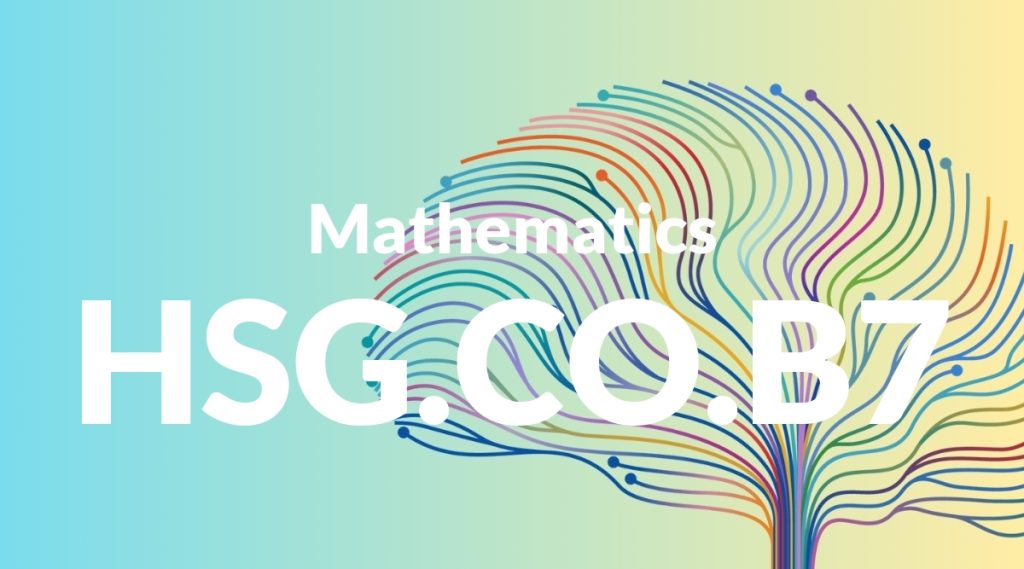Standard: HSG.CO.B7 – Use the definition of congruence in terms of rigid motions to show that two triangles are congruent if and only if corresponding pairs of sides and corresponding pairs of angles are congruent.
Grade level: High School: Geometry
Subject: Mathematics
Domain: Congruence
Teacher Overview
This standard focuses on understanding and proving the congruence of triangles using rigid motions. It is crucial as it lays the foundation for geometric proofs and reasoning, which are essential skills in geometry and higher mathematics. Students should be familiar with basic geometric concepts such as triangles, angles, and rigid motions. They should also understand how to measure and compare angles and sides.
After mastering this standard, students will be prepared to tackle more complex geometric proofs and understand the principles of similarity transformations, which are essential for advanced studies in geometry and related fields.
Common Misconception 1
A common misconception is that two triangles are congruent if they appear similar. This is incorrect because congruence requires that all corresponding sides and angles are exactly equal.
Intervention 1
To address this misconception, use physical models and interactive software to show that congruence involves exact matches of sides and angles, not just similar shapes.
Common Misconception 2
Another misconception is that congruence can be determined by comparing just one pair of sides or angles. This is incorrect because congruence requires all corresponding sides and angles to match.
Intervention 2
Provide exercises that require students to check all corresponding sides and angles, emphasizing that congruence is a comprehensive condition.
Prerequisite Knowledge
Students should have a basic understanding of triangle properties, angle relationships, and the concept of rigid motions including translations, rotations, and reflections.
Subsequent Knowledge
After mastering this standard, students will be able to explore more complex geometric proofs, understand similarity transformations, and apply congruence concepts to solve real-world problems in higher mathematics.
Instructional Activities
- Use dynamic geometry software to visualize rigid motions.
- Hands-on activities with triangle cutouts to explore congruence.
- Group work on geometric proofs involving triangle congruence.
- Real-world problem-solving tasks involving congruent triangles.
- Interactive quizzes and games to reinforce concepts.




